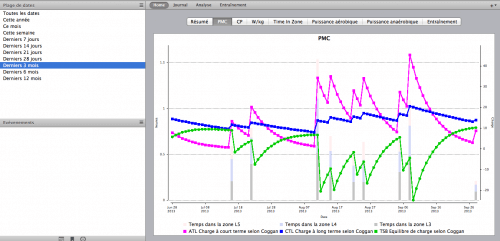
And for the painted shell version you also can choose between eight different designs for the side. The shell is made of anodized aluminum, which is available in ten different colours and can be personalized at the left and right side.Īlso a painted shell version is available: you just have to tell us your desired colour and we paint it. Selecting the profile for the respective bike prior to departure eliminates the previously required pairing with the power meter. Since many riders have several bikes with power meters, the PC8 supports up to four different bicycle profiles. A built-in motion sensor turns the PC8 on automatically when riding. The memory capacity is 500 MB, which can store data up to 4,000 hours of training. The light as well as the GPS can be turned off in order to prolong battery life, which is between 10 and 45 hours.

Of course, the PC8 also has GPS (for recording) and is controlled by a light sensor backlight.

Also, location and content of the various data fields on the display is configurable. the Training Peaks metrics such TSS® (Training Stress Score®), NP® (Normalized Power®) and IF® (Intensity Factor®) are calculated, and the values are displayed. In addition to common values such as power, heart rate, speed, etc. TSS*: This means manually added TSS.With the PC8 SRM offers a device that is focused entirely on the needs of athletes, and foregoes gimmicks. It’s an estimation that hasn’t been validated by any scientific data. If you’re wearing a heart rate monitor and don’t have cycling power, always use this. ONLY PAY ATTENTION TO THIS AS A LAST RESORT Really, this is just measuring volume, which we know isn’t great. TTSS: When you don’t have anything else, Training Peaks will estimate TSS based simply on time. It’s fairly easy to define your threshold here, but unless you only run on flat non-technical ground, all paces during your workout are garbage. RTSS: The small “r” denotes that this is Run TSS, which is calculated based off of your Threshold running pace. There are MANY different ways that TrainingPeaks tries to estimate your TSS, most of them are crap: You need to have GOOD data! If you have a good threshold value, but you’re comparing it to crap data, then your TSS is WRONG! You need to have a GOOD threshold value! If your threshold value isn’t correct, then your TSS is WRONG.

Then it tallies up all the seconds, and gives you something like 45TSS per hour (60m of 200W with a 300W threshold), or 100TSS (60m of 300W with a 300W threshold). If a second reads 300W, you’ll get something like. If that second is 200W, you’ll get something like 0.0125TSS per second. TSS estimates workload by comparing each second of exercise to your “threshold”, or what you could hold for one hour.įor example: If your threshold power on a bike is 300 watts (W), Training Peaks is going to analyze your power second by second comparing each reading to 300W.

In TrainingPeaks, workload is “measured” (estimated) by Training Stress Score (TSS). Over days and weeks, however, workload and fatigue should correlate pretty well. Sometimes running a mile in 8 minutes might be really hard and make you really tired. It’s important to realize that workload and fatigue are often used to describe the same thing, but are different. “Workload” is usually how we quantify what we do to the body. It’s very difficult to measure how tired your body gets, so instead what we usually measure is what we do to it. The goal with all training is to make you tired in specific ways, and then allow your body to recover and adapt.


 0 kommentar(er)
0 kommentar(er)
